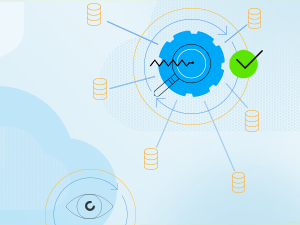OpenEdge Table Partitioning: Divide and Conquer Your Data
Divide and conquer — it’s a phrase we’ve all heard before. Derived from the Latin saying divide et impera, in politics and economics, it’s a strategy to gain or maintain power. In warfare, it’s a tactical maneuver to efficiently and effectively deal with multiple opponents. But “divide and conquer” is relevant in data management too; it’s just called something else.
Table Partitioning, as it’s referred to in IT, is when data is divided into smaller units that have their own name and storage characteristics. From the perspective of a database administrator, a partitioned table has multiple pieces that can be managed either collectively or individually. This gives the administrator considerable flexibility in managing a particular partition. However, from the perspective of the application, a partitioned table is identical to a non-partitioned table; no modifications are necessary. Logically, it is still only one table.
Table Partitioning offers three methods that control how data is placed into partitions:
- Range: data is distributed based on a range of values of the partitioning key.
- List: data distribution is defined by a discrete list of values of the partitioning key.
- Sub-partitioning: data is group based on a combination of the other two choices.
So what are the benefits? For one, partitioned database tables provide partition independence, which can be an important part of a continuous availability strategy. For example, if one partition requires maintenance, all of the other partitions of the table remain available. This also offers the ability to rebuild the indexes for multiple partitions at the same time. By partitioning tables into smaller, more manageable units, database administrators can focus maintenance operations on particular portions of tables instead of the entire data set. And, by limiting the amount of data to be examined or operated on, partitioning provides improved performance.
At Progress, our OpenEdge solution offers table partitioning that allows users to design database layouts based on specific data values or ranges in order to improve performance, maintenance and data availability. Check out the below video to learn more about OpenEdge table partitioning, and then visit our website to learn all the benefits OpenEdge for accelerating application development.

Bethe Tomasek
Bethe has worked at Progress for a decade, beginning as a part of North America Sales as a Partner Account Manager. Over the last three years, Bethe has transitioned into Field Marketing and has worked with both Direct Customers and Partners in the OpenEdge division. The liaison for the Progress User Group (PUG) community, Bethe strives to be a field marketer that is effective and respected. Follow Bethe on Twitter @BetheTom.
Next:
Comments
Topics
- Application Development
- Mobility
- Digital Experience
- Company and Community
- Data Platform
- Secure File Transfer
- Infrastructure Management
Sitefinity Training and Certification Now Available.
Let our experts teach you how to use Sitefinity's best-in-class features to deliver compelling digital experiences.
Learn MoreMore From Progress
Latest Stories
in Your Inbox
Subscribe to get all the news, info and tutorials you need to build better business apps and sites
Progress collects the Personal Information set out in our Privacy Policy and the Supplemental Privacy notice for residents of California and other US States and uses it for the purposes stated in that policy.
You can also ask us not to share your Personal Information to third parties here: Do Not Sell or Share My Info
We see that you have already chosen to receive marketing materials from us. If you wish to change this at any time you may do so by clicking here.
Thank you for your continued interest in Progress. Based on either your previous activity on our websites or our ongoing relationship, we will keep you updated on our products, solutions, services, company news and events. If you decide that you want to be removed from our mailing lists at any time, you can change your contact preferences by clicking here.


